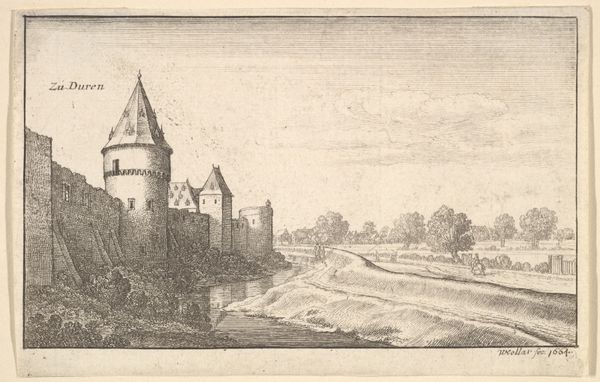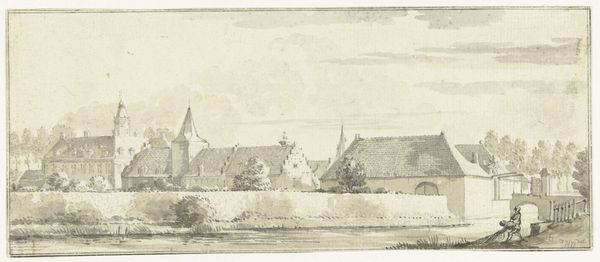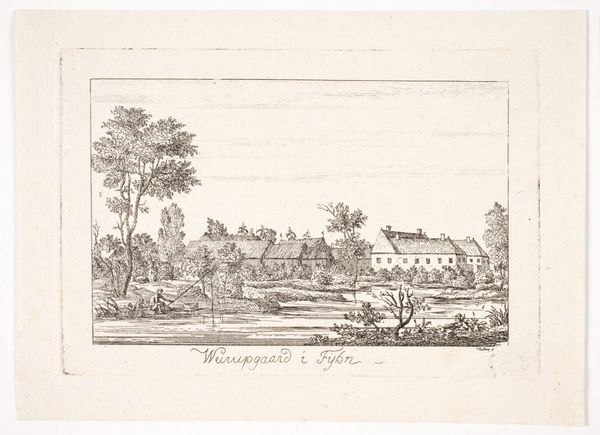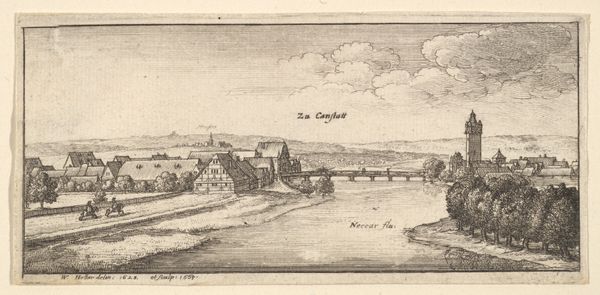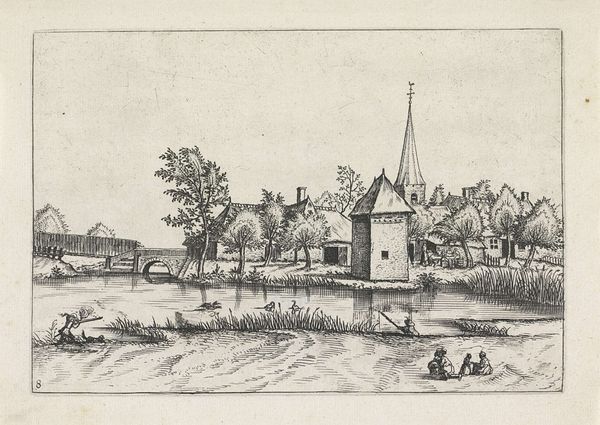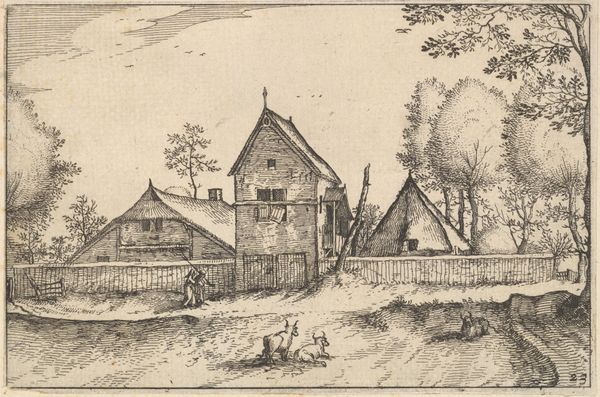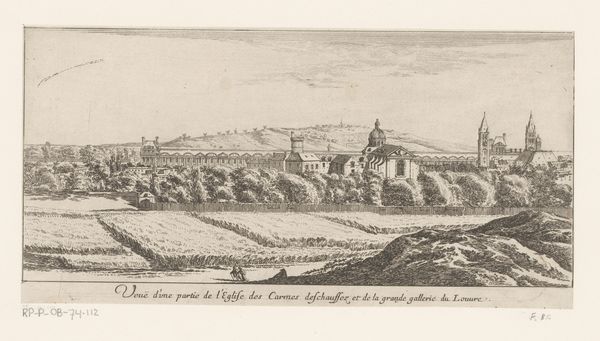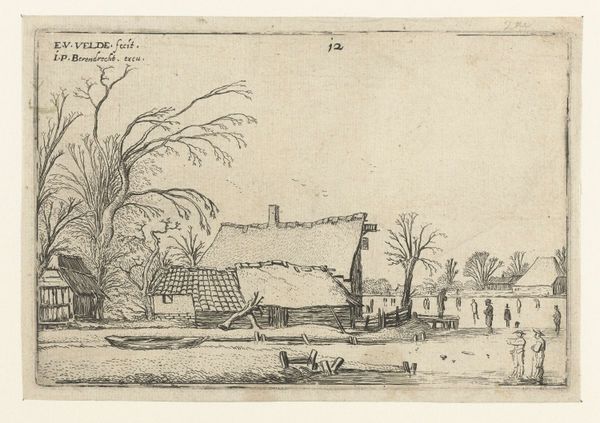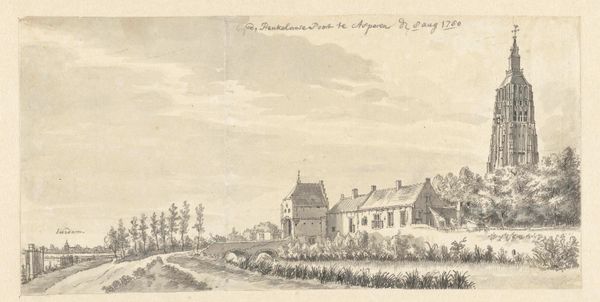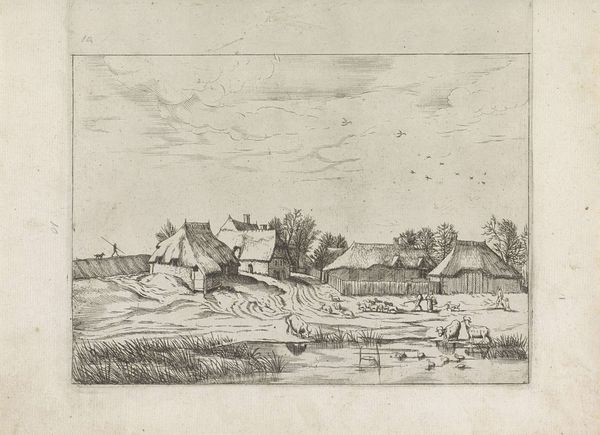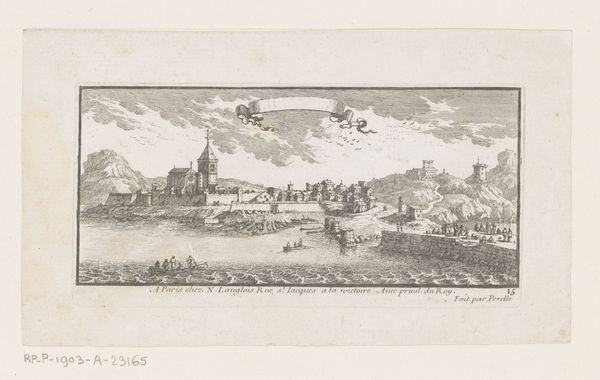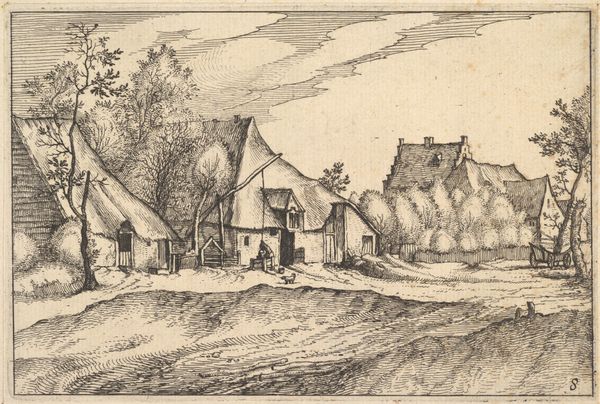
drawing, print, etching
#
drawing
#
baroque
# print
#
etching
#
landscape
#
cityscape
Dimensions: Sheet: 2 1/16 × 4 7/16 in. (5.2 × 11.3 cm)
Copyright: Public Domain
Editor: Here we have "Esslingen," an etching and print made by Wenceslaus Hollar between 1663 and 1665. It's currently held at the Metropolitan Museum of Art. There's something quite serene about the ordered structure of the city as reflected in the river. What do you see in this piece? Curator: I am struck by the linear quality achieved through the etching technique. Note the systematic, almost mathematical, progression of arches supporting the bridge, repeated at intervals. It provides a sense of stability and reasoned order. Editor: The texture in the foreground contrasts so strongly with the precise architecture behind it, and even in the clouds. Why? Curator: Consider the function of line in defining form and space. Hollar uses finer, denser lines to suggest the solid mass of the buildings, and more loosely scattered marks in the water and sky. These distinctions aren't random; they visually structure our reading of depth within the work, wouldn’t you agree? Editor: So, the varying densities of the marks establish depth? That’s really interesting. Does the bridge also play a role in defining spatial relationships? Curator: Precisely. The horizontal thrust of the bridge provides a visual anchor, a point of orientation in the image's structure. Notice how the towers punctuating the bridge repeat the verticality established by the spire on the left. The formal relationships create a visual rhythm that resonates throughout the entire composition. What is your sense of how the reflection interacts with the image overall? Editor: It seems almost to double the architectural detail but with less sharp resolution, underscoring its insubstantial, ephemeral nature. Thank you, this really opened my eyes. Curator: Indeed. By analyzing formal elements – line, texture, space – we start to appreciate how a seemingly straightforward image operates through sophisticated compositional strategies.
Comments
No comments
Be the first to comment and join the conversation on the ultimate creative platform.

